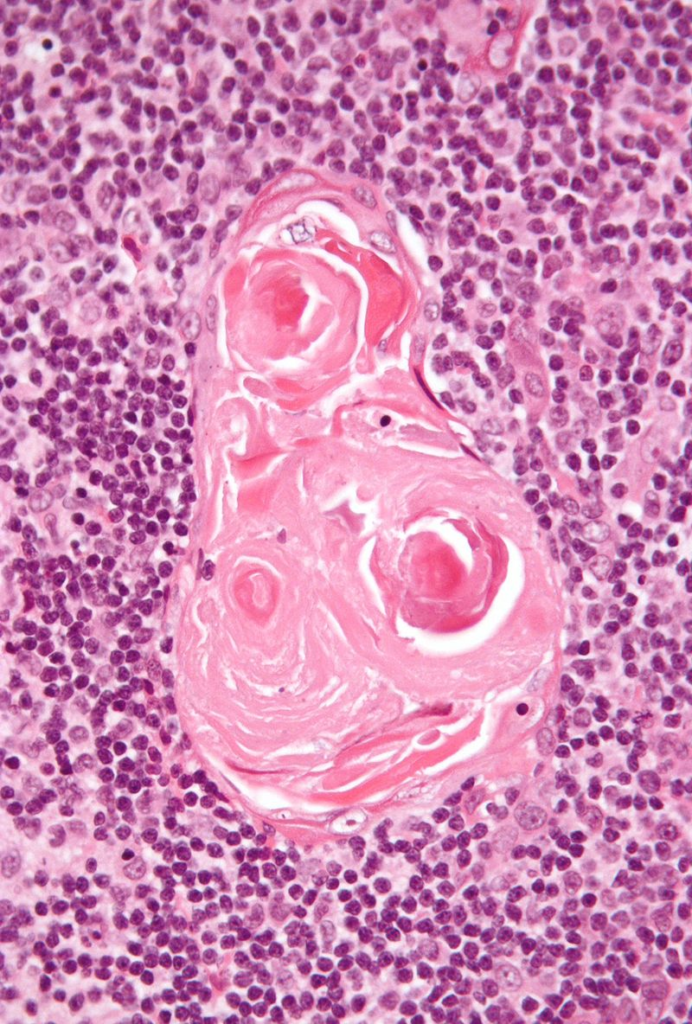Introduction
Primary lymphoid tissue is a critical component of the immune system, where immune cells develop, mature, and acquire their antigen-specific functions. These tissues serve as the birthplace of immune cells, ensuring proper immune responses against pathogens and maintaining immune homeostasis. Understanding primary lymphoid tissue is essential for medical professionals, particularly those in immunology, hematology, and oncology. This article provides a comprehensive overview of primary lymphoid tissue, including its types, function, related studies, treatment considerations, and clinical significance.
- There are two primary lymphoid organs in humans including the
- bone marrow
- the site of development for B-cells
- thymus
- the site of development for T-cells
- bone marrow
- They serve as the site of adaptive immune cell maturation steps such as
- replication of an
- immature progenitor cell population
- recombination of VDJ regions to
- generate adaptive immune cell receptors
- positive selection to remove
- cells with defective surface receptors
- negative selection to remove
- cells that are reactive against self-antigens
- replication of an
- Abnormalities in primary lymphoid tissue can result in
- immunocompromise due to
- failure of adaptive immune cell development
- autoimmunity due to
- immunocompromise due to
- failure of central tolerance mechanisms (negative selection)
Bone Marrow
- Bone marrow is the site of pluripotent hematopoietic stem cells that can
- differentiate into many different lineages of which the two relevant to immunity are
- the lymphoid lineage, which
- is stimulated by the cytokine IL-7
- includes members of both the adaptive and innate immune response
- B-lymphocytes (adaptive)
- T-lymphocytes (adaptive)
- NK cells (innate)
- the myeloid lineage which
- is stimulated by GM-CSF and IL-3
- includes members of the innate immune response
- monocyte/macrophage
- eosinophils
- mast cells
- basophils
- platelets
- erythrocytes
- dendritic cells
- the lymphoid lineage, which
- differentiate into many different lineages of which the two relevant to immunity are
- Bone marrow also serves as the site of B-cell maturation where
- the B-cell receptor is recombined
- immature B-cells undergo both positive and negative selection
Thymus

- The thymus is a primary lymphoid organ that is
- located in the anterosuperior mediastinum
- derived from the third pharyngeal pouch
- bilobed in structure with a dense cortex and a pale medulla
- the site of Hassall corpusles containing epithelial reticular cells
- The thymus serves as the site of T-cell maturation where
- the T-cell receptor is recombined
- immature T-cells undergo both positive and negative selection
- The thymus is composed of several regions including
- an outer cortex region with
- immature T-cells
- a network of epithelial cells, dendritic cells, and macrophages
- a corticomedullary region that serves as the site for
- positive selection of T-cell receptor development
- negative selection against autoimmune T-cells
- an inner medullary region containing
- mature T-cells
- epithelial reticular cells
- an outer cortex region with
- Hassall’s corpuscles
Abnormalities
- Abnormal development of primary lymphoid organs can lead to
- immunodeficiency syndromes such as
- autoimmunity syndromes such as
- myasthenia gravis associated with
- development of a thymoma
- generalized autoimmunity due to
- failure of central tolerance
- myasthenia gravis associated with
Types of Primary Lymphoid Tissue:
- Bone Marrow: The bone marrow is the primary site of hematopoiesis, where hematopoietic stem cells differentiate into various blood cells, including B lymphocytes.
- Thymus: The thymus gland is the site where T lymphocytes undergo maturation and education to develop functional immune responses.
Function of Primary Lymphoid Tissue:
- Bone Marrow: Hematopoietic stem cells in the bone marrow give rise to B cells, which mature and acquire diverse antigen-specific receptors.
- Thymus: T cell precursors migrate to the thymus, where they undergo selection processes that allow functional T cells to develop and differentiate.
Lymphoid Cell Development:
- Bone Marrow: B cell development occurs in the bone marrow, where progenitor cells differentiate into mature B cells, equipped with unique antigen receptors.
- Thymus: T cell development takes place in the thymus. Positive selection ensures that T cells recognize self-MHC molecules, while negative selection eliminates T cells that react too strongly to self-antigens.
Clinical Significance:
- Immunodeficiency: Dysregulation or abnormalities in primary lymphoid tissue development can lead to immunodeficiency disorders.
- Autoimmunity: Defects in central tolerance mechanisms within primary lymphoid tissue can contribute to autoimmune disorders.
Primary Lymphoid Tissue Studies:
- Developmental Studies: Research investigates the molecular and cellular processes involved in the differentiation and maturation of immune cells within primary lymphoid tissues.
- Tolerance Mechanisms: Studies focus on understanding the mechanisms that ensure self-tolerance during lymphocyte maturation.
Treatment Considerations:
- Immunodeficiency: In cases of severe immunodeficiency due to primary lymphoid tissue dysfunction, bone marrow or stem cell transplantation may be considered.
- Autoimmunity: Immunomodulatory therapies may be used to manage autoimmune disorders resulting from dysregulated immune cell development.
Future Directions:
- Stem Cell Therapies: Research explores the potential of stem cell therapies to correct primary lymphoid tissue dysfunction and restore immune function.
- Immunotherapies: Innovations in immunotherapy aim to harness immune cells developed in primary lymphoid tissues for cancer treatment and management.
Conclusion:
Primary lymphoid tissue is a cornerstone of the immune system, responsible for the development, maturation, and education of immune cells. The bone marrow generates B cells, while the thymus fosters the maturation of T cells. These tissues play a crucial role in ensuring proper immune responses, maintaining self-tolerance, and preventing immunodeficiency and autoimmunity. Dysregulation of primary lymphoid tissue development can have significant clinical implications.
Check out USMLE Step 1 Mastery: Comprehensive Course and Lecture Notes


